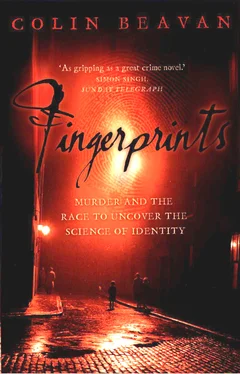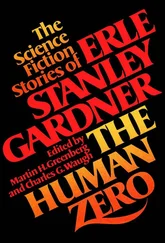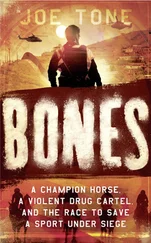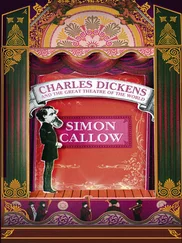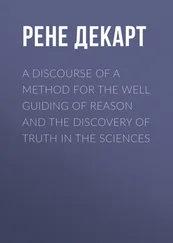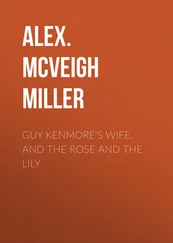Police found no eyewitnesses and no murder weapons. The lack of forced entry meant there was no way to identify the criminals from knowledge of their methods. Not even the stocking masks, found in the shop, offered any helpful clues. If the robbers had brought the masks with them, a visit to the neighborhood stocking shop might have developed a promising lead, but the thieves had cut them from Mrs. Farrow’s own hose.
To make matters worse, the burglars, interested only in the shopkeeper’s cash, had stolen no trinkets of value. No piece of stolen jewelry or silverware would link them to the case. Visits to pawnshops and known receivers, standard procedure after such a crime, would turn up nothing. The only hope was that Mrs. Farrow might recover consciousness and identify her attackers to the constable who waited beside her hospital bed. But the longer she remained unconscious, the greater the risk that she would succumb to a fatal bout of pneumonia.
Macnaghten saw that the case was troublesome and it brought back bad memories. Only three days after he first joined the Yard in 1889, two telegrams arrived reporting that the body parts of a woman had been found on the banks of the Thames. Macnaghten and a group of detectives slipped and slid their way along the muddy riverbank, picking over debris in search of the rest of the torso. Because the head was never found, it took a scar on the wrist to identify the body as belonging to a woman who had been reported missing from her lodging house in Chelsea. There the trail went cold. Macnaghten’s first case, known as the Thames Mystery, was never solved.
This was just one year after Jack the Ripper’s seven brutal murders had gone unsolved and Macnaghten had then experienced firsthand the public’s anger toward the police when they did their job badly. “Jack” had made police investigators look foolish by delivering, right under their noses, signed notes to newspapers. On Macnaghten’s first day, his new boss, the CID’s then Chief Constable, commenting on the public’s angry response, said, “Well, my boy, you are coming into a funny place. They’ll blame you if you do your duty, and they’ll blame you if you don’t.”
Throughout the rest of his career, Macnaghten kept on his desk gruesome photographs of the Ripper’s victims, each goading him to let no other cases go unsolved. He’d experienced failure and he couldn’t bear to experience it again. But because of the lack of clues turned up by his subordinates in the Farrow case, he might have no choice. This wasn’t going to look good for the police.
Farrow had been killed in his own store, on the busy High Street, while commuters rushed past outside, and no policeman had seen or noticed anything suspicious. “Certain members of the police force are lacking in discernment and intelligence,” the Kentish Mercury said of the Farrow murder. Recently, another shopkeeper’s murder in Brixton had gone unsolved. Together, the crimes suggested a trend, and crime trends were what Macnaghten’s CID was supposed to prevent.
Macnaghten marched purposefully past the shop counter and mounted the stairs, determined to search for clues of his own. He surveyed the bloodied chaos in the bedroom, where his eyes fell upon the cash box and its tray, jutting out from under Mrs. Farrow’s bed. He carefully picked them up, but not before taking his handkerchief from his pocket to prevent his bare fingers from touching their surfaces.
For some time, a small group of officers in Macnaghten’s department had been developing a technique that they claimed could identify a man from a surface that he had touched. Macnaghten and his senior colleagues envisioned a system with assembly-line efficiency, spitting out proofs of the presence of suspects at crime scenes, and closing cases that might otherwise go the way of the Ripper and Thames Mystery murders.
But the use of forensics was uncommon in these times when the boundary between science and quackery was blurry. Acceptance of the new technique depended on convincing the police ranks that it was practical and the judiciary and the public that it was just. Macnaghten had been hoping for some time for a headline-grabbing case that might prove these points. He thought the Farrow case might be the one.
The Assistant Commissioner turned the cash box and tray over in his hands, scrutinizing the surfaces for the clue he needed. Suddenly he looked up. “Have all the men assemble up here,” he told a nearby constable. Once the men had hauled themselves up the steep, narrow stairs, Macnaghten eyed them as a group. “Has anyone touched this cash box or its tray?” No one stepped forward. Macnaghten’s tone and demeanor suggested that he might not be pleased with any man who answered yes. He told them to think carefully. This was important.
The officers shuffled nervously. If one had touched it and sought to hide his unintended misdeed, would Macnaghten later hear of the fact from another officer? Better to own up now than get caught in a lie. Sergeant Atkinson stepped forward. He had pushed it a little ways under the bed, he said, to ensure that the stretcher bearers didn’t trip on it when they took Mrs. Farrow away. Macnaghten nodded. Again with his handkerchief, he picked up the tray of the cash box, turning its underside toward the men. On the shiny, enameled surface they saw a dull, oval smudge, such as their children’s greasy fingers might leave behind after draining a glass of milk. Some understood its import, others did not.
Macnaghten handed the tray along with his handkerchief to one of his officers. Wrap it carefully in paper and make sure no one else touches it, he said. Then Macnaghten turned to Sergeant Atkinson, who was still standing in front of the assembly. Macnaghten could see that the young sergeant was embarrassed. No harm done, Macnaghten said. But he ordered the sergeant to report to Detective-Inspector Charles Collins at the Yard so he could be sure the mark on the tray hadn’t come from his fingers.
When Macnaghten left the room, those officers who understood the significance of the smudge carped among themselves. The old guard were highly suspicious of this new “scientific palmistry” that so intrigued the boss. Use of these newfangled fingerprints in such a high-profile murder investigation could bring ridicule on the Yard. Only once before had a crime-scene fingerprint been accepted in a British court, and that was just for burglary. This was murder. What jury would be willing to send a man to the gallows on the evidence of a gob of sweat smeared on a piece of metal?
Thomas Farrow’s body was barely cold when Detective-Inspector Collins received the cash-box tray later that day. Collins was second in command of the new fingerprint branch, a part of Macnaghten’s CID. Before the 1901 formation of the branch, Collins had, for many years, been forced to use old-fashoned methods of criminal identification, based on measuring bodies, photographing faces, and writing down distinguishing features. These methods were far from reliable. Now, for the first time in his career, Collins had encountered an identification system that actually worked, and he was obsessed with it. He would ultimately dedicate more than twenty-five years of his life to improving and applying the fingerprint technique.
In his office loomed a huge wooden cabinet with 1,024 pigeonholes accommodating each of the classifications into which an individual’s set of ten fingerprints could fall. A handful of fingerprint experts bustled back and forth between their workbenches and the cabinet’s cataloged fingertip impressions. Examined closely, a fingertip reveals a pattern of parallel ridges interspersed with furrows, as though of a diminutive farm field. The furrows are like gutters into which moisture flows so that it is not trapped in a slippery film between the fingertip and whatever it is trying to grip.
Читать дальше
